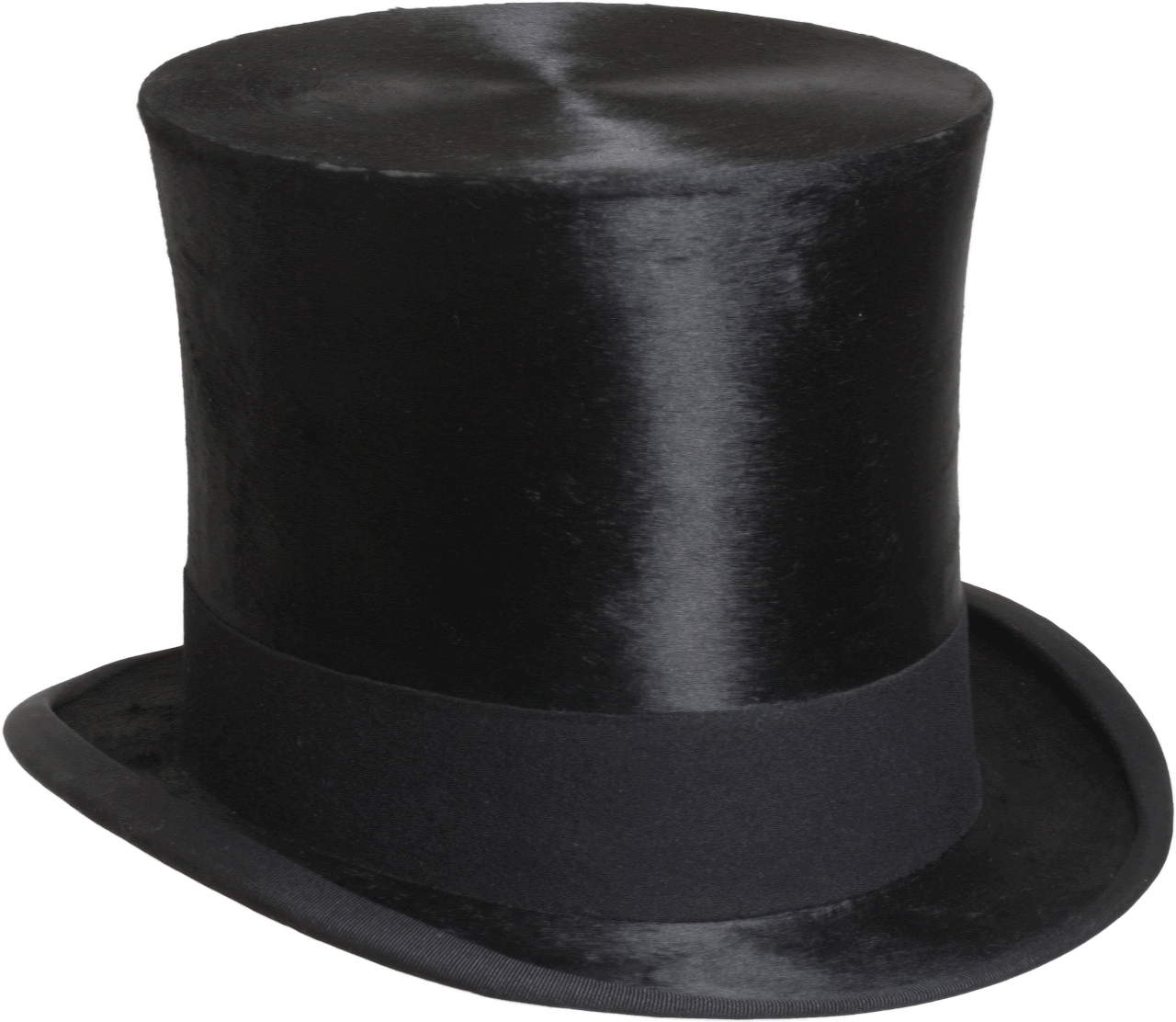ARTIFACT
Finding Toxins in the Museum’s Top Hats

Abraham Lincoln hardly needed to make himself more imposing; at 6-foot-4, he towered over most people, especially since in the 1850s, 5-foot-6 was the average. Still, he often wore a top hat, adding seven or eight inches to his stature. From the late 18th through the 19th centuries, the top hat was the height of fashion for bigwigs on important occasions, and political cartoons often show the robber barons as bloated figures in high hats. JFK donned a top hat for his 1961 inauguration, but it’s hard to imagine a U.S. politician wearing one today. The topper has faded into history, but lives on as an icon of men’s formal dress. The Museum at FIT has 33 in its collection, dating from 1850 to 1960.
In December 2019, MFIT received a grant from the Institute of Museum and Library Services (IMLS) to test for hazardous materials in its objects. MFIT lacks the conservation science resources of many larger museums, and the grant enabled them to hire an expert and rent analytical equipment. Suspect objects were tested for the presence of heavy metals using X-ray fluorescence (XRF) spectroscopy.
It’s well known that mercury, a toxic heavy metal, was used to prepare the animal fur, often beaver, used to make top hats. Historically, many hatmakers suffered neurological symptoms, including dementia, irritability, and tremors, giving rise to the phrase “mad as a hatter”—and the eccentric Hatter character in Alice in Wonderland.
Surprisingly, tests showed that most of MFIT’s hats contained a different but just as toxic heavy metal—arsenic. Another surprise: Only one hat was animal fur (possibly beaver) and contained mercury; most were made of silk.

By the 1830s, beavers had been hunted nearly to extinction, and a silk plush fabric replaced beaver fur. Little is known about the fabric. (It was made in only one factory, in France, owned by two brothers. After a falling out, one reportedly burned down the factory to spite the other.) Ann Coppinger, senior conservator at MFIT, who presented the research at an International Council of Museums conference in Prague in 2022, says, “It’s not clear what the arsenic was used for. Maybe it was a mordant, to fix the dye on the fabric.”
Based on the study, the information on the hats’ fabrication was corrected, and the museum’s handling protocols were updated. The tested hats have been labeled as toxic and are now handled with gloves. —Linda Angrilli